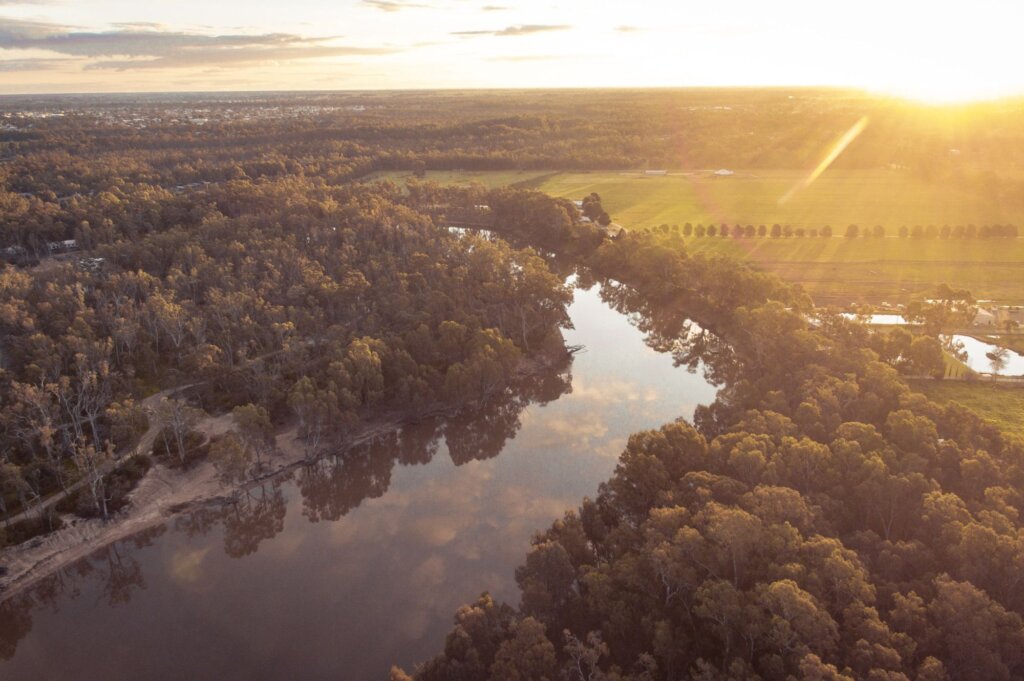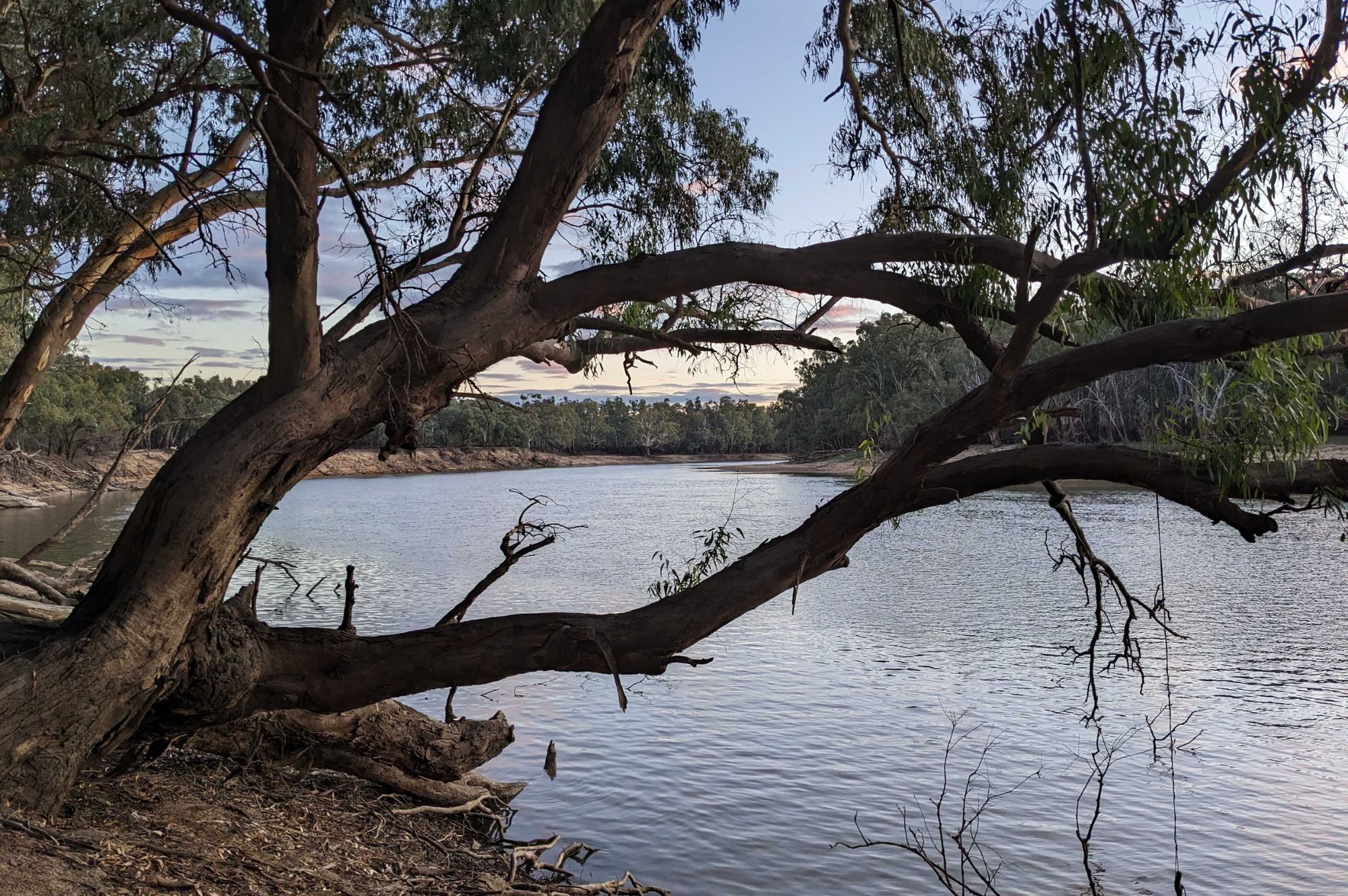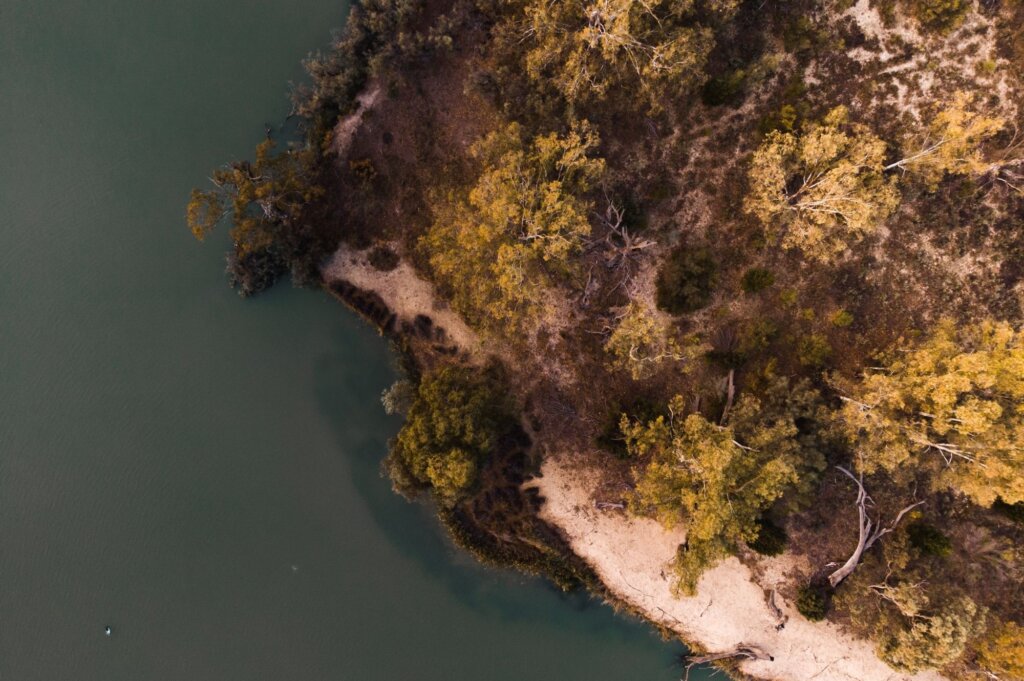30 September 2022
The Murray-Darling is Australia’s largest and most complex river system, flowing through five states and territories and supporting diverse and iconic ecosystems.
It is also now one of the most vulnerable water basins on Earth, writes lawyer Natalie Hogan.
Earlier this month, three of us from EJA, together with staff from Environment Victoria, travelled to the top of our state and spent five days among some of the most iconic forests, lakes and wetlands in Victoria, and the country.

The Murray River and its floodplains hold immense cultural and ecological significance.
These special places are closely linked to our national identity, health and livelihoods. Sixteen Murray River wetlands are internationally recognised for their contribution to global biodiversity.
The Murray River is home to more than 50 native fish, 85 mammal species, 367 native and migratory bird species, frogs, lizards, turtles, insects and many other animals, trees and plants, including the River Red Gum tree, which recently took out the top spot in ABC’s Favourite Native Tree countdown.
In the last century, the Murray and its Southern Basin have faced increasing threats, primarily from climate breakdown and industry, agriculture and cities taking too much water. Sadly protecting and regenerating the river system that’s so vital to life has been at the bottom of the priority list.
While visiting these areas earlier this month, we saw distressed and dying trees in dry wetlands and stark evidence of environmental degradation and lack of water flow. We also saw some natural flooding and higher water levels, and parts of the floodplains alive with the sounds of birds, frogs and insects – proof that there is hope.

One Friday, we attended the River People’s Forum in Swan Hill organised and hosted by Sustainable Living in the Mallee and Friends of Nyah Vinifera Park, with assistance from Swan Hill Rural City Council.
The forum brought together environment groups, Traditional Owners, scientists, water consultants, politicians, farmers, irrigators, members of the community (and EJA lawyers!) to talk about projects and plans for the future of the river, drawing on a wealth of knowledge and lived experience. This was an invaluable opportunity to hear from those who know, love and depend on the river.
EJA Senior Specialist Lawyer, Dr Bruce Lindsay, was the first speaker at this event, delving into the legal framework surrounding the Basin and some misconceptions, and you can read his excellent speech here.
Other speakers and panellists included First Nations people, water consultants, university lecturers and professors, local council and federal government representatives, farmers and irrigators, and local residents. The different perspectives and insights offered by each of the speakers provided a platform for robust discussion and debate about environmental, social and economic priorities, needs and interests.

The river system and basin are protected under layers of law.
Including one of the first ever international conservation treaties, the Ramsar Convention, and state and federal legislation.
In 2012, the Murray-Darling Basin Plan was introduced, with an aim to achieve a “healthy and working Murray-Darling Basin”. The Basin Plan is the principal legal framework operating under the Commonwealth Water Act. The objectives of the Water Act [1] are to:
- Manage Basin water resources in the national interest;
- Give effect to international environmental treaties;
- In doing so, promote and use Basin water resources in a way that optimises economic, social and environmental outcomes, addresses over-extraction and achieves an environmental sustainable level of take;
- Protect, restore and provide for the ecological values and services of the Murray-Darling Basin; and
- Subject to the above, maximise net economic returns to the Australian community.
The key legal mechanism built into the Water Act aimed at achieving the above outcomes and intended to resolve tensions in the requirement to reach an “environmentally sustainable level of take”. That means, the amount of water that can be taken or diverted without jeopardising the health of the river and the ecosystems that rely on it.
The stated purpose of the Basin Plan was to manage the amount of water being diverted away from environmental sources to enable the river to function naturally and deliver water to floodplains in the absence of naturalised flooding.
Between 2012 and 2018, there was increasing public concern that the Basin Plan was failing to achieve any of its stated ecological outcomes, and reports emerged of water theft, illegal take and misuse of Commonwealth funds, amongst other things.
Ultimately, this prompted a South Australian Royal Commission which, in 2019, found that the Basin Plan had been subject to gross maladministration, negligence, misconduct and unlawful actions. The Commission made 44 recommendations, including for the States to review their water resource plans to expressly recognise and authorise the taking and use of water by First Nations people in exercise of native title rights, and to deliver more water to the environment which has previously been allocated to farming and irrigation. The Commission also observed that the Plan and “environmentally sustainable level of take” did not account for the effects of climate change and that the Murray-Darling Basin Authority needed to “urgently” conduct a review of this using the best available scientific knowledge. Ultimately, the Commission recommended a complete overhaul of the scheme.

Recently, a multi-agency partnership launched the Victorian Murray Floodplain Restoration Project (VMFRP). The Project refers to a bundle of proposed environmental reengineering works, designed to get water into floodplain and wetland ecosystems in the absence of naturalised flooding. The works are a component of the Sustainable Diversion Limit Adjustment Mechanism, which is ultimately intended to reduce the amount of water to be returned to the Basin environment – from an already unlawful, inadequate base. The project will focus on nine critical floodplains in Victoria. They are:
- Five Central sites (Hattah Lakes North, Belsar-Yungera, Nyah Forest, Vinifera Forest and Burra Creek);
- Two Eastern sites (Guttrum and Benwell State Forests and Gunbower National Park); and
- Two Western sites (Lindsay and Wallpolla Islands).
Starting this week, and over the coming months, environmental assessment processes will commence to assess the potential environmental impacts or effects of each of the floodplain projects.
As the assessments are released for public consultation, we will scrutinise project plans to ensure these iconic ecosystems receive the water they need to thrive. The Murray River and its floodplains are special places, and we have a responsibility to safeguard their resilience and health for future generations.
For too long, politics and economic interests have displaced law and science.
“The fate of the Basin is as much about the rule of law as it is about the ecological resilience or degradation of the Basin’s river ecosystems.”
Dr Bruce Lindsay
At EJA, we view the law as a powerful tool to advocate for better environmental outcomes and thriving ecosystems based on current science, and this is what we intend to do for the Murray-Darling during these processes.

